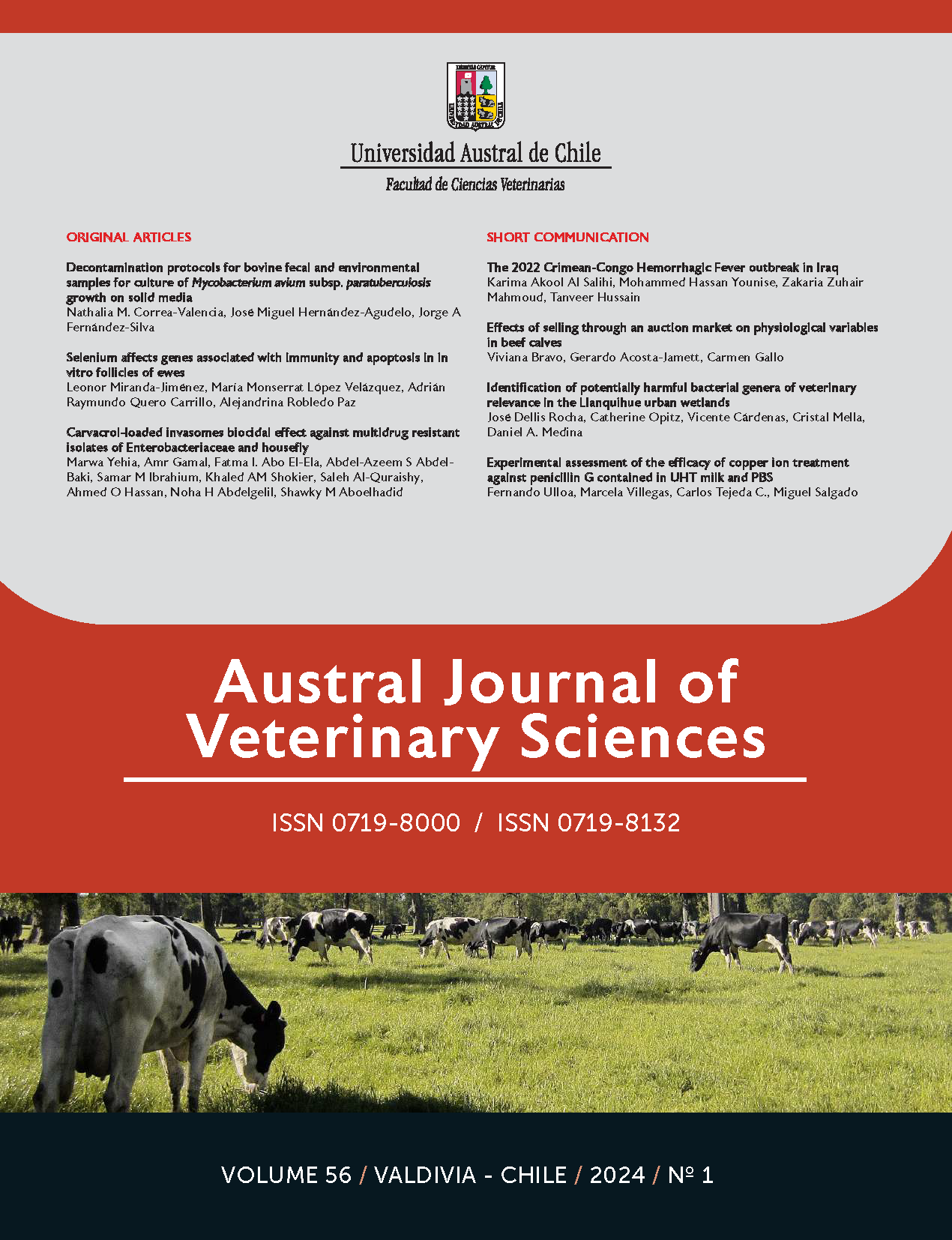Identification of potentially harmful bacterial genera of veterinary relevance in the Llanquihue urban wetlands
Main Article Content
Abstract
Water bodies constitute natural, social, and ecological heritage under constant threat from the footprint of human action. They are the habitats of many species and play a key role in sustaining biodiversity in different ecosystems. However, anthropogenic activity can result in eutrophication of water bodies, favoring the excessive growth of microorganisms, which can be a risk factor for animal, human, and environmental health. The Agricultural and Livestock Service [Servicio Agrícola y Ganadero (SAG)] of Chile developed a list of Mandatory Reportable Diseases (MRD) to report suspected contagious diseases of veterinary relevance. In this sense, the detection of microorganisms in water bodies for the characterization of their sanitary status is important for the development of monitoring strategies and the prevention of possible diseases. This study aimed to determine the presence of potentially harmful bacteria in Llanquihue urban wetlands. Here, we used metagenomic sequencing of amplicons to characterize the composition of microorganisms in three urban wetlands in the city of Llanquihue, which could be a risk factor for animal health. Our main finding was the detection of genera that may be associated with MRD, in addition to other microbial genera that have pathogenic potential. On the other hand, we also report the presence of cyanobacteria genera that can be involved in toxin production in water bodies as another potential source of risk. This is the first study to use massive sequencing techniques to analyze the sanitary status of urban wetlands in the city of Llanquihue.


 https://orcid.org/0009-0008-3264-1589
https://orcid.org/0009-0008-3264-1589